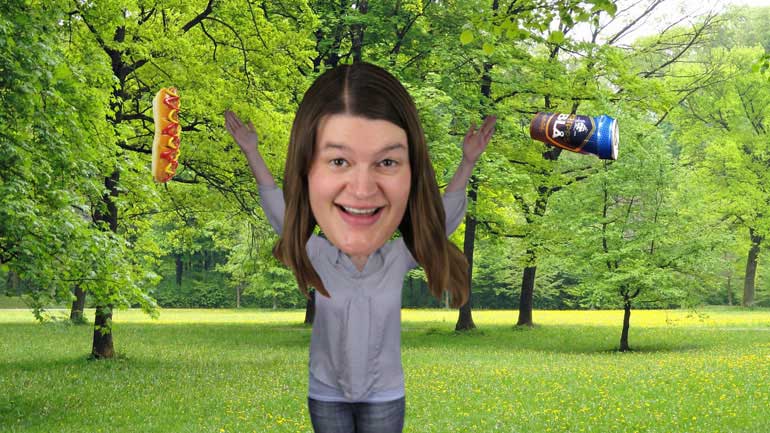ShmoopTube
Where Monty Python meets your 10th grade teacher.
Search Thousands of Shmoop Videos
ACT English 1.9 Passage Drill 211 Views
Share It!
Description:
ACT English: Passage Drill 1, Problem 9. Which is the best spot for the underlined word?
Transcript
- 00:04
Here's your Shmoop du jour, brought to you by untouched coconuts. We bet some of them
- 00:08
are in dire need of a hug.
- 00:25
The best placement for the underlined portion would be... where?
- 00:29
An untouched coconut has three layers.
- 00:32
And here are the potential answers:
Full Transcript
- 00:37
The underlined portion consists solely of the adjective "untouched." How do we know
- 00:42
it's an adjective?
- 00:43
Because it's doing its best to describe a noun, which is, in this case, "coconut."
- 00:46
Let's take a stroll though these options and see which one best helps our adjective
- 00:51
do its job.
- 00:51
Choice (C) says that the writer should place "untouched" before the word "layers."
- 00:56
If the writer does this, the sentence would read, "An coconut has three untouched layers."
- 01:01
Uh... terrible idea. For one, it uses the word "an" where it should use "a,"
- 01:05
since "coconut" begins with a consonant.
- 01:07
More importantly, it completely changes the meaning of the sentence. The writer isn't
- 01:10
describing the layers of the coconut; he or she is telling us about the coconut as a whole.
- 01:14
Choice (D) would read, "Untouched an coconut has three layers."
- 01:19
This option has tons of problems. There's the a/an issue from before. Also, "untouched"
- 01:23
needs a comma after it.
- 01:24
Ultimately, it's just a wonky way of expressing the thought and is undeserving of further attention.
- 01:28
Choice (B) suggests placing "untouched" before the word "has." So the sentence
- 01:32
would read, "The coconut untouched has three layers."
- 01:36
This option is incorrect, because the adjective is usually placed before the noun it's modifying, not after.
- 01:41
This means that the original placement was right all along, and the correct answer is (A).
- 01:45
The sentence should indeed read, "An untouched coconut has three layers."
- 01:49
Warning: we set booby traps around our coconut trees to ensure that our coconuts remain untouched.
- 01:54
Proceed at your own risk.
Up Next
ACT English: Punctuation Drill 2, Problem 2. Where should the semi-colon be placed?
Related Videos
ACT English: Punctuation Drill 3, Problem 1. How should this sentence be changed so that it is grammatically correct?
ACT English: Punctuation Drill 3, Problem 2. How should we properly hyphenate the words in this sentence?
ACT English: Punctuation Drill 3, Problem 4. Which choice best formats this list of items?
ACT English: Punctuation Drill 2, Problem 1. Which choice of punctuation best completes the sentence?




